A Lesson About People Based Messaging And Doubting Your Analytics.
 I want to show you one of my favorite pieces of local content I saw this week.
I want to show you one of my favorite pieces of local content I saw this week.
 I’m not going to be writing yet-another-piece about the issue at hand. There are plenty of other folks better qualified to doing just that. Still, before I get too far into this, I feel like it’s appropriate to point you towards a little bit of context.
I’m not going to be writing yet-another-piece about the issue at hand. There are plenty of other folks better qualified to doing just that. Still, before I get too far into this, I feel like it’s appropriate to point you towards a little bit of context.
If you want to get up to speed on the topic at hand, Kirk Mitchell has been doing a delightful job collecting updates on Twitter (and really has a great piece from November that outlines the basics.) I also want to shout out Danika Worthington’s delightful synthesis of questions about the power dynamic between radio ‘stations’ and ‘stars.’
There’s been a lot of coverage here, driven largely by the work of great local players talking about a story that was bound to have national intrigue. You could tell that a lot of folks hit the ground running, right at 8 on the first day of jury selection.
I point this out, because the fine folks at 9News just put together what truly is one of my favorite content pieces of the last week, “WHY PEOPLE SAY THEY DON’T CARE ABOUT THE TAYLOR SWIFT TRIAL (BUT CLICK ON STORIES ABOUT IT ANYWAY)”
 The piece makes a few interesting movements.
The piece makes a few interesting movements.
As the tweet suggests, Allison and the fine folks at 9News tracked down Hunted acclaimed author and local personality Max Wachtel to comment on why people would engage with content at the same time they were complaining about it.
In the article he is quoted as saying:
““So taking the time to click on the link, to say ‘I don’t care about this, why are you reporting on this?’ is a way of telling the world ‘I don’t really care about this’ even though I do.””
It was surprising to me to hear this answer from the source, because it’s one of those digital marketing truthisms that I’ve long worried we’ve said so often it’s lost gotten so divorced from the context in which it was originally uttered, it may be perilously close to running out of meaning. I myself have said it more times than I’d like to own up to.
It’s one of those lines like:
Because the corrupt system I helped build is no longer in anyone’s control. The manipulators are indistinguishable from the publishers and bloggers — the people we were supposed to be manipulating. (Ryan Holiday from TMIL)
That ends up running through the same treadmill most ideas in digital media are subject to. They start off insightful critiques, and before too long are parroted in the wrong way by well-meaning folks who are just trying to keep up with a media landscape that may be changing faster than one can plan a career around.
 There’s probably still some truth to that old dynamic that’s long been a key tool in the kit in the growing body corpus of outrage marketers that are still making waves the world over.
There’s probably still some truth to that old dynamic that’s long been a key tool in the kit in the growing body corpus of outrage marketers that are still making waves the world over.
Trouble is, it’s not the only truth out there, and if you focus on it you run the risk of missing important feedback signals like these:
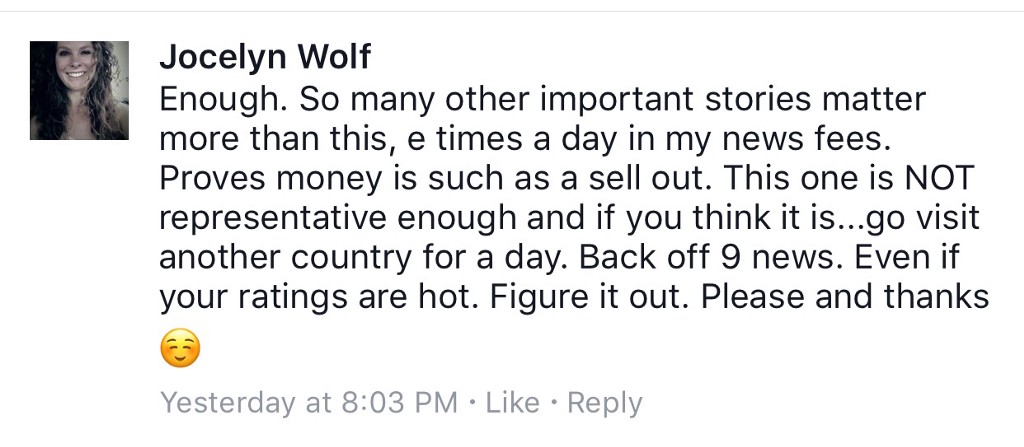
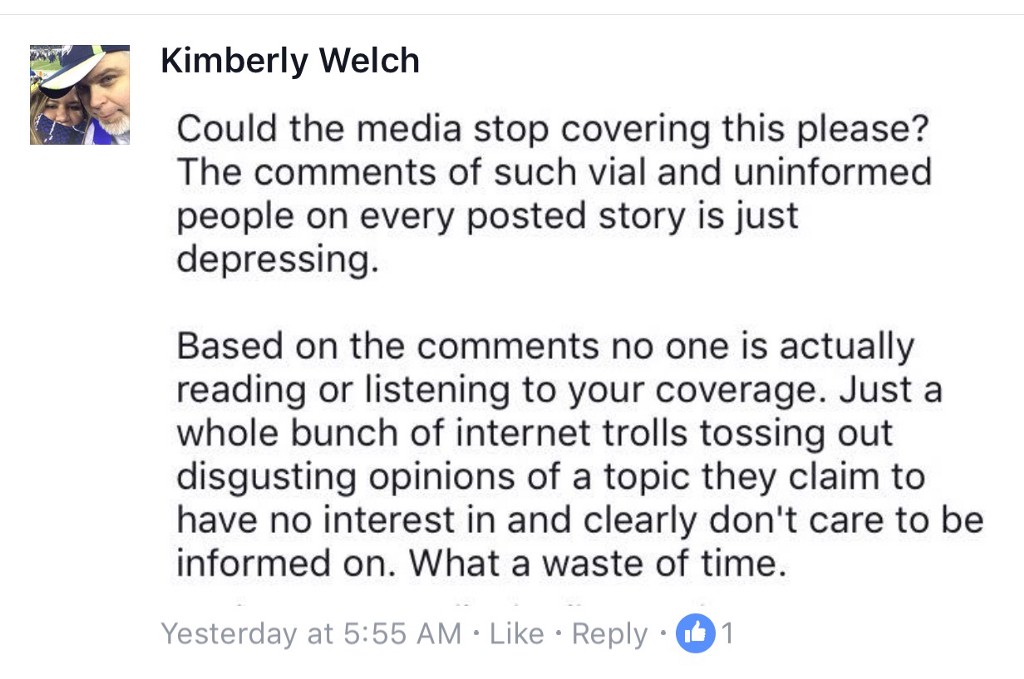
 When you’re working in the production of content, the comments section is actually one of the most insightful places to be. It’s like a pulse, really.
When you’re working in the production of content, the comments section is actually one of the most insightful places to be. It’s like a pulse, really.
At a glance you can tell what’s working and what isn’t working. In part that’s because you can quickly sort out who has actually read the content and who hasn’t. You can follow the people that are tagged by their friends in a post. You can pay attention to the person who said something ridiculously insightful and was ignored for it. It’s one of the fastest ways to develop a meaningful understanding of the impact you’re having as an advertiser or as a publisher.
When you see a stack of reactions to a story, you expect to encounter 2–3 different takes. You should see people who agree with the bent of the content piece, and people who disagree with the direction the story was headed. You might see a similar schism occur in the reaction to the facts included in the piece, or the headline or really anything that reasonable people might disagree about.
That’s certainly happening here for the majority of consumers.
How do I know?
Facebook automatically defaults to ranking comments by popularity.
 One would expect these numbers to breakdown on lines similar to any opinion polling conducted on the topic.
One would expect these numbers to breakdown on lines similar to any opinion polling conducted on the topic.
It’s hard to put that information back into context sometimes, but it’s not the only information that you have. Most websites track a variety of really basic things — and some of them aren’t actually tracked for advertising purposes. Putting that data back together is a serious challenge, but it can help to make better decisions about how to balance your resources.
I’ll give you a quick example.
You need to know how long it takes to load your website. That’s because the longer it takes to load your website, the less likely anyone is to actually wait around for it to happen. It’s useful in other cases, too. If your website were down, one of the first things you might notice is that it’s taking longer and longer to load.
 To measure something like that, you also need to have a pretty good idea of how many people come to your website.
To measure something like that, you also need to have a pretty good idea of how many people come to your website.
Once you have that information, you may decide to invest in resources that make it possible to understand more about the viewing habits of your visitors.
One you start down this path, there’s a very real temptation that many communications professionals succumb to — especially early on. It’s this idea that you should track everything you can. Even advocates of tracking lots of things like the fine folks at Amplitude caution early teams against doing this.
The reasons are varied, but one of the most important is that when you’re first starting out distributing your work online, you pay attention to everything. You watch comments like I mentioned above, but most of us are hungrier than that. We watch every new hit in the audience tracking, and explore until we can figure out what it might mean. The truth is, there’s a balance. You’ve got to learn how to maintain it.
Most of the time these little blips don’t mean anything, but the longer you work on it, the more you start to notice patterns. Some of those patterns drive change. In identifying them and finding out how to take advantage of them, you discover opportunities for growth that other people are missing.
One easy way to know what advertising/marketing technology a website is using is to take advantage of a browser plugin like the one offered by the fine folks at Ghostery.
If you were to do so, you’d find that the fine folks at 9News are tracking a lot of things.
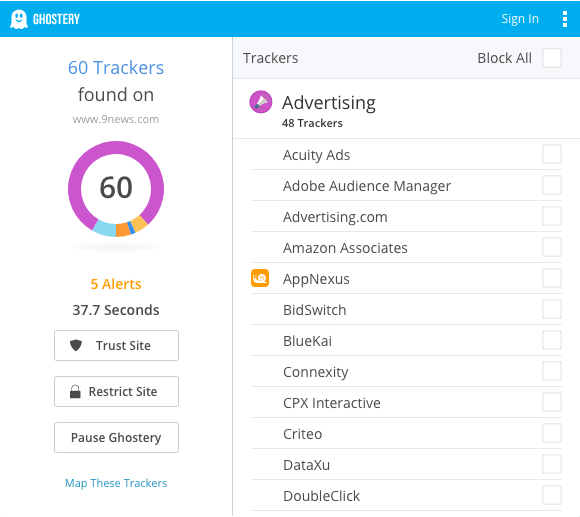
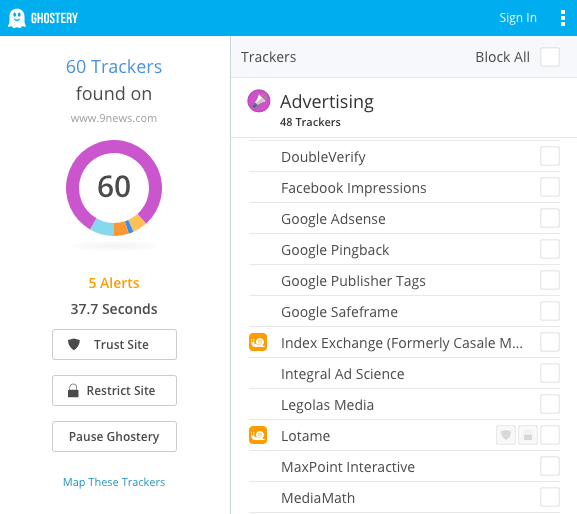
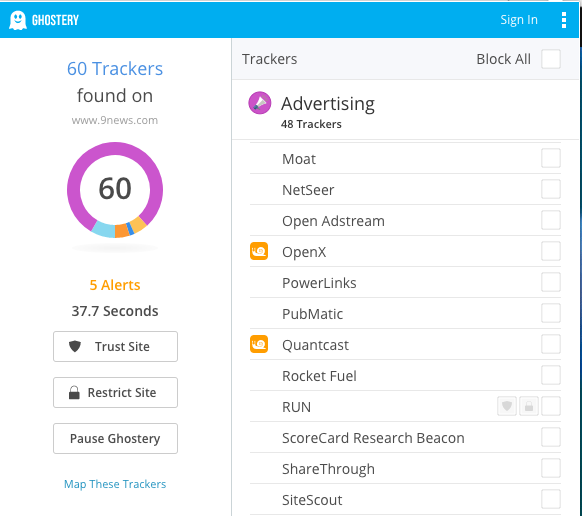
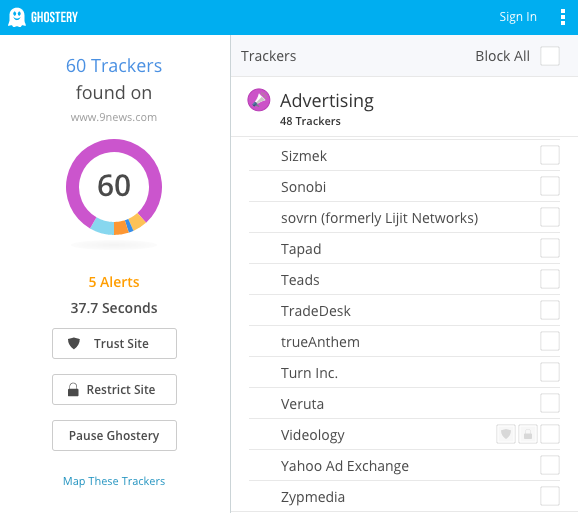
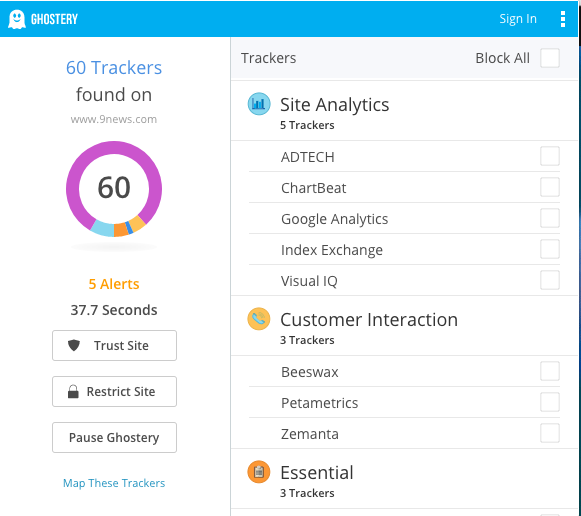
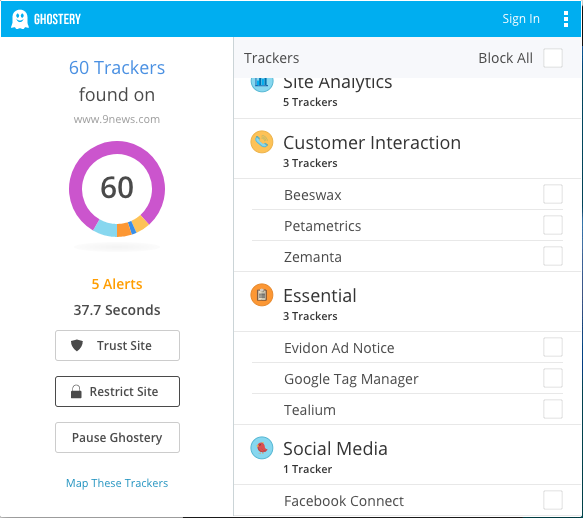 The trouble is that once you’ve noticed a pattern that helps you to make sense of your data, it’s really hard to take a step back and see if there are other more likely explanations.
The trouble is that once you’ve noticed a pattern that helps you to make sense of your data, it’s really hard to take a step back and see if there are other more likely explanations.
It’s easier to believe that “some people engage with content because they secretly like it,” than it is to accept that “the people who click my article aren’t always doing it to read it.”
But we know that happens, too.
One disadvantage of that particular content stack is that while it collects a goodly amount of data, it slows down the site to the point where it is unusable for a growing segment of users.
We know this from the comments like these:
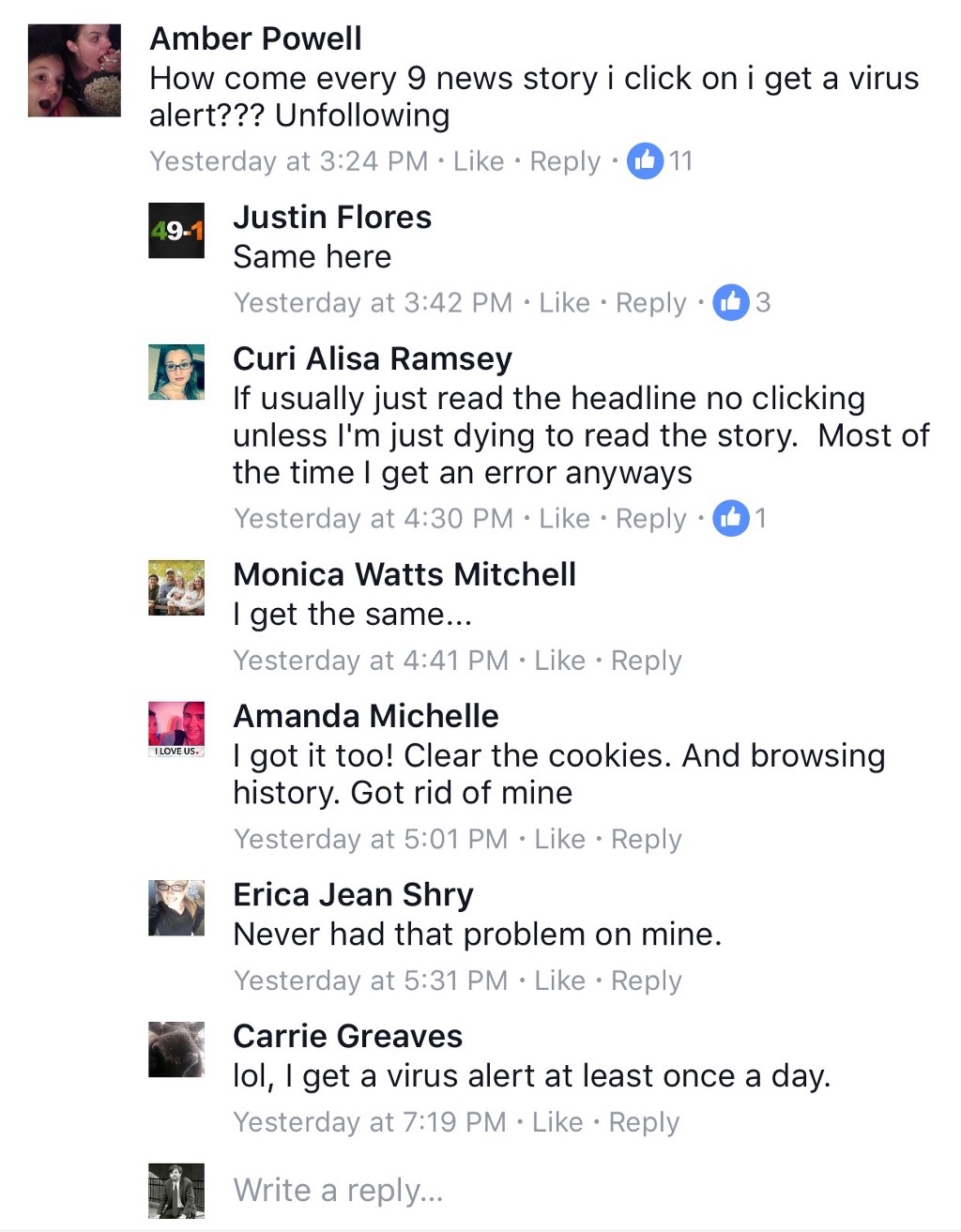
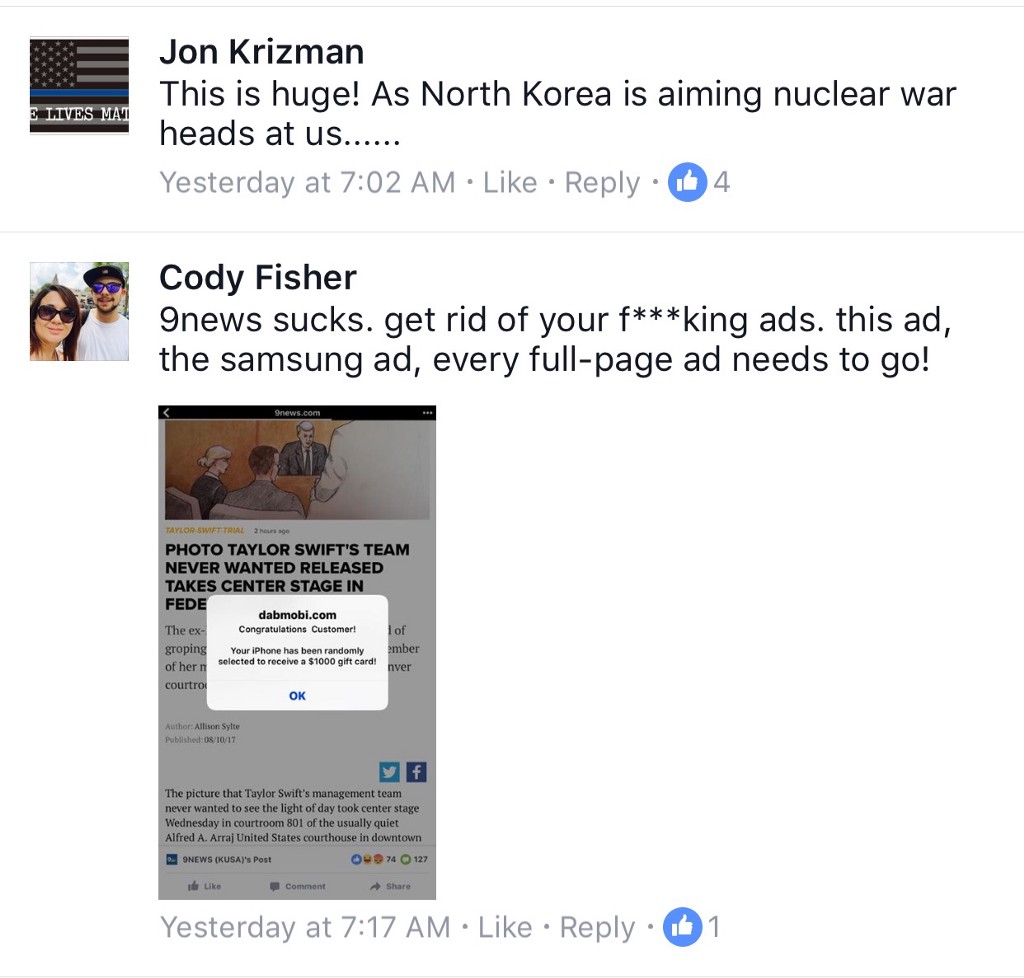
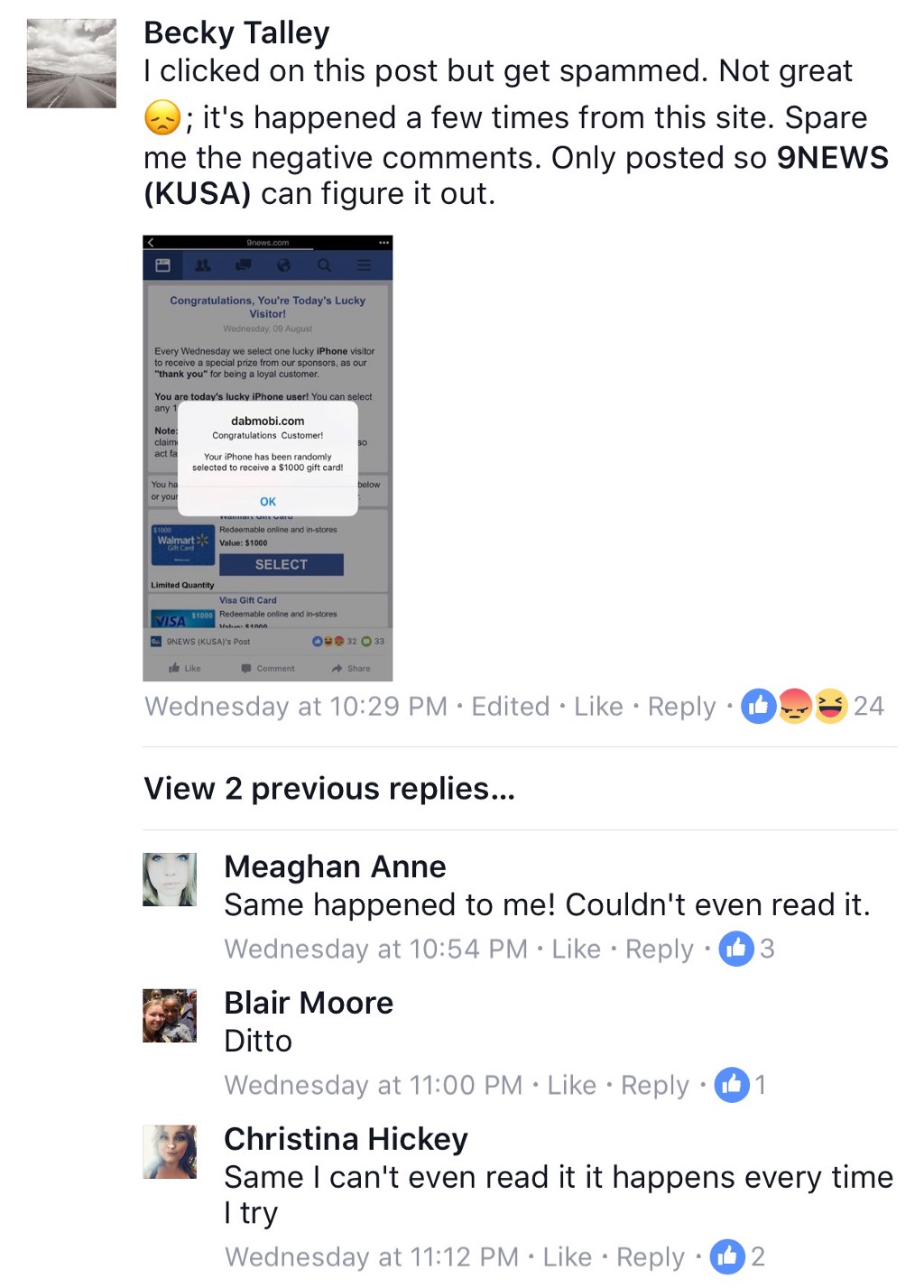
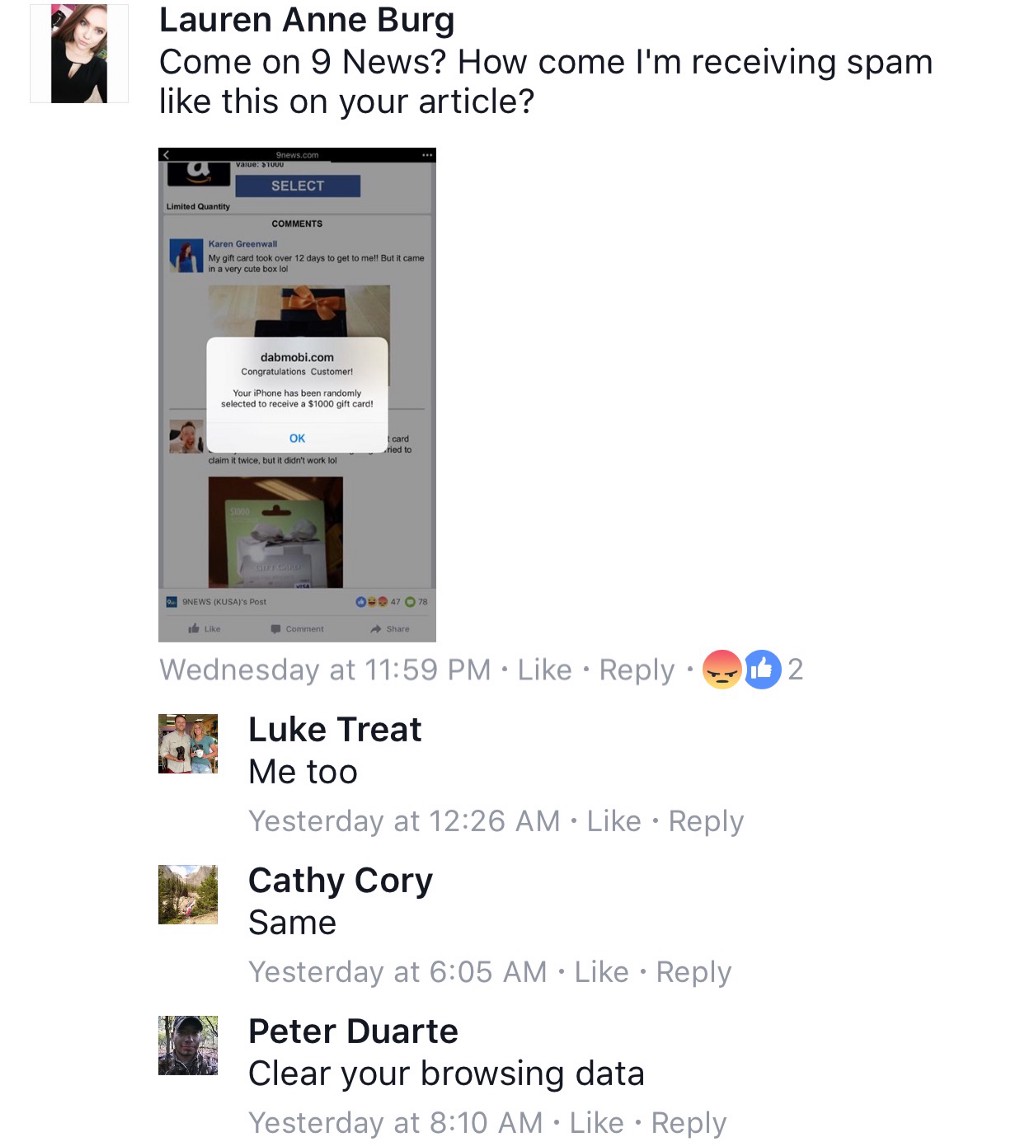 Users who are posting comments like these happen to be of an interesting subset. When one clicks through it’s easy to notice that a growing percentage of people who are experiencing these problems are local to Colorado — 9News’s home viewing market.
Users who are posting comments like these happen to be of an interesting subset. When one clicks through it’s easy to notice that a growing percentage of people who are experiencing these problems are local to Colorado — 9News’s home viewing market.
 That’s a pretty indication that those are the sorts of users who are likely to visit the site frequently. Those people are more likely to engage with a wider variety of content. That’s why it’s also an indicator that traffic results may be skewed by an uptick in traffic from out-of-market viewers.
That’s a pretty indication that those are the sorts of users who are likely to visit the site frequently. Those people are more likely to engage with a wider variety of content. That’s why it’s also an indicator that traffic results may be skewed by an uptick in traffic from out-of-market viewers.
The extent to which 9News should compete to produce content that resonates nationally versus the amount of resources they should devote to covering local stories isn’t the kind of thing that can just be “decided:” it’s likely a very delicate balance. But the extent to which local viewers and national viewers have different interests in a current event is something you can measure.
There’s nothing inherently wrong with doing a good job of producing the kind of pieces that get picked up at the next level up the coverage ladder. At the same time, it’s equally important to keep your commitment to serve the people who are your regular, bread and butter customers, with the experience they expect on a regular basis.
You have to be willing to break your audience up in to parts. No amount of advertising or marketing technology can do that for you. Sure you can integrate your tracking suite. You can use a tool like Segment to curate that data and you can spend hours making calls into a database about it, but none of that is going to tell you what to do when the signals are mixed.
 When they are, you’ve got two choices. You can get on the path to developing different messaging experiences for different segments of your audience, or you can keep trying to be everything to everybody. But the truth is you really have to pick: you just can’t do both.
When they are, you’ve got two choices. You can get on the path to developing different messaging experiences for different segments of your audience, or you can keep trying to be everything to everybody. But the truth is you really have to pick: you just can’t do both.

Share this post
Twitter
Facebook
Reddit
LinkedIn
StumbleUpon
Pinterest
Email